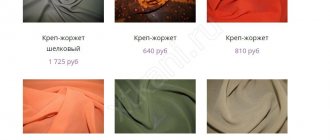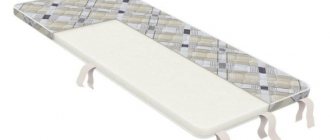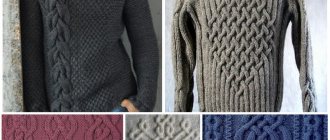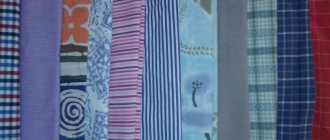Inexperienced seamstresses often encounter an annoying problem: a product that, after manufacturing, fits perfectly to the figure, becomes too small after the first wash because the fabric has shrunk. Sometimes the degree of shrinkage is insignificant, and sometimes the thing turns out to be hopelessly ruined - it shrinks so much. To protect themselves from such surprises, experienced needlewomen use a technique called decating.
What is the essence of the process?
Decatting a fabric is treating it with moisture and heat before cutting. That is, forced sitting down. However, do not confuse decatification with washing: they are not exactly the same thing (and sometimes not the same at all). But if you know certain subtleties, it won’t be difficult.
Before cutting the product, you should keep in mind that some types of textiles can shrink up to 8 cm per meter. That is, after the first wash, the product will become two sizes smaller!
Wet-heat treatment before cutting and sewing not only forces the fibers to shrink, but also relieves their tension, that is, stabilizes them. This means that such a product will be less deformed. For colored fabrics, you can additionally fix the color.
The decatification regime, as well as washing and ironing, depends on the composition of the textile. The following processing is required:
- fabrics containing from 50 to 100% natural fibers;
- fabrics with a rare weave of threads (for example, boucle);
- textiles with an admixture of elastane;
- lining;
- cushioning materials of any composition.
When carrying out processing, it is important to apply several rules:
- ironing is carried out only on the wrong side;
- the iron moves only in the direction of the warp threads (lobar);
- You cannot dry textiles on a rope - a folding dryer, a crossbar or a stick will do;
- the fabric is soaked (or even washed) if the finished product is planned to be washed;
- If the item will be dry cleaned (suits, jackets, coats), steaming with an iron is sufficient.
Do not wash fabric if its label indicates that it has been treated with a special impregnation (antistatic, dirt-repellent, anti-crease, etc.). Make do with steaming.
We process correctly
The decaling of natural, artificial, synthetic and mixed fabrics is different. The higher the percentage of natural fiber, the more “aggressive” the processing should be.
Do not neglect home decalcification if there is a note on the material’s label that it has already been done industrially. Better to play it safe.
How to decatify different fabrics?
- Textiles made from cotton and linen are first “shocked”: immersed in hot and then cold water. There is no need to intensively twist or wring out the fabric, otherwise “stubborn” creases will form. It is enough to squeeze it lightly, dry it and iron it slightly damp. If such textiles have a bright color or pattern, adding vinegar to cold water (a spoon per liter) will help fix the color. When ironing, it is important to protect the surface of the ironing board with thick white material: cotton textiles often shed heavily. If colored marks remain on the protective fabric, the product will have to be washed separately from other items in the future.
- Calico is treated in the same way, since this fabric consists of natural cotton fiber.
- Staple decatification begins with soaking in hot water (up to 14 hours). It is convenient to do this at night. Then you need to squeeze it lightly, let the water drain, but do not dry it too much, but dry it with a hot iron.
- But for viscose, long-term soaking is not suitable, since it can cause the fibers (and this is cellulose) to swell greatly. 20 minutes in warm water is enough. Then the viscose needs to be dried and ironed from the inside out in the “Silk” mode.
- Processing of natural silk consists of “wet wrapping”. The textile piece is wrapped in a damp sheet (preferably white, to prevent “mutual shedding”) and allowed to lie for a couple of hours. Next, the silk is dried a little and ironed with a semi-damp iron from the inside out in the “Silk” mode. Since natural plain silk often leaves unsightly stains from water droplets, ironing should be done without steam.
- The artificial silk is left for 15–20 minutes in warm water, adding a little salt to it - this will help maintain its shine. Then squeeze a little and wrap in a dry white sheet for 3 hours. At the end of the procedure, the artificial silk is dried from the inside out with an iron, being careful not to stretch it too much.
- Woolen and wool-blend textiles are not soaked. It is either wrapped in a damp sheet for 10 hours, or sprayed from the inside with water from a spray bottle and left to lie (up to 12 hours), depending on the thickness of the wool. Thick, coarse material is wrapped in a sheet moistened with a solution of water with salt (teaspoon per liter) and vinegar (tablespoon per 2 liters), thin material is sprayed. After this, the fabric is carefully steamed with a hot iron, always through an ironing iron (otherwise unsightly lasses may remain), trying not to pull the iron, but carefully rearrange it in the direction of the grain thread.
- Decating knitwear and chiffon is not so clear. They are produced with different fiber compositions. Therefore, the processing option must be selected based on it. Since chiffons are thin and light fabrics, they can be lightly treated with gelatin to make cutting easier (the chiffon will warp less) as well as sewing (gathering at the seams is prevented). Knitwear consisting of synthetics practically does not shrink. For it, damp ironing from the inside out is enough. If decatification by washing is planned, the knitwear is washed with baby shampoo on a delicate cycle in a special laundry bag.
- You just need to wet the cushioning fabrics for decating in warm water and let them dry, after removing excess moisture with a terry towel.
- The lining material is also moistened with warm water, lightly wrung out, allowed to dry and ironed semi-damp. Or spray and iron dry.
- There is no need to remove non-woven fabric, synthetic padding, adhesive auxiliary materials, natural and artificial leather, crinkled fabrics, varnish, pile materials (velvet, corduroy, velor), bologna.
If decating is carried out by washing, you must first treat the sections of the material with an overlocker so that they do not fray or crumble. This is especially important for very loose fabrics.
Decating is not such a complicated process. But if it is done correctly, the future product, already at the cutting stage, is insured against the fact that it will be small in finished form. Unless, of course, there are errors in the calculations.
Decating fabric.
Hello to all blog readers!
What is fabric decating? This is a forced shrinkage of the textile fabric - the cut that you purchased. Why is it needed? The fact is that in the production of textile fabrics, threads (fibers) are under great tension, especially warp threads. And then the threads (fibers) of the fabric are released from tension, and when washed or moistened before ironing, they show their elasticity, swell, their length changes and the fabric shrinks.
So, in order not to be “excruciatingly painful” when, having put in a lot of effort and sewing something, then, after the first wash, you discover that a new and already loved item has decreased by a size, or even two, you need to decatenate the fabric.
Preparing fabric for cutting.
Decating fabric.
How to lay out a pattern on fabric?
How to lay out a pattern on checkered fabric?
How to lay out a pattern on striped fabric?
How to lay out a pattern on printed fabrics with large patterns?
How to lay out a pattern on fabric with coupons?
How to lay out a pattern on fabric with borders?
How to lay out a pattern on scalloped fabric?
How to cut fabric correctly?
Decating is not washing. Decatting is the saturation of fabric fibers with moisture: steam, moisturizing from a spray bottle, soaking, so that they swell. And then, as the fabric dries completely, the fabric shrinks.
During manufacturing, the surface of textile fabrics is subjected to various treatments, and washing a completely new material can deprive it of its presentation, surface shine, etc. Therefore, you can shrink the fabric by washing only when you are completely sure that washing is permitted by the rules for caring for this fabric and will not spoil the “freshness” of the new cut.
In order to know for sure whether a fabric needs to be decated, it is necessary to have information about the composition and origin of its fibers. Because fabrics made from cotton, linen, wool, silk and some artificial fabrics (viscose, rayon) must be decatified. And also mixed, mixed and mixed-mixed fabrics, where in addition to fibers of chemical origin there are the same cotton, linen, wool, silk and viscose.
They say that you can ask the fabric seller about the composition of the fabric and its properties, and whether there is a need to decate this or that fabric before cutting. I wrote this and thought about it, but I never even tried to ask. I’ll have to try it, maybe they are really competent in these matters and know everything about their fabrics. It's good if so, and they can really help.
Of course, the most reasonable thing would be to test the fabric for its tendency to shrink on a separate small piece of fabric. That is, take a small piece of fabric, say 10x10cm, and, after stretching and ironing it, measure it again. And it will immediately become clear whether the fabric shrinks or not. If you approach this procedure responsibly and do everything carefully, then in this way you can even determine when the fabric shrinks by millimeters.
But often even this small piece of fabric is simply not there. As they say, the fabric is tight, the fabric is tight.
How are fabrics treated?
And immediately one piece of advice, general advice for all fabrics. If the fabric is colored, multi-colored, then to prevent the paint from running, you need to add a little vinegar to the water, a teaspoon per liter.
Cotton fabrics.
Cotton fabrics are soaked in a small amount of warm water. Without squeezing, they are dried, and then ironed, still a little damp, on the wrong side.
Linen.
Linen fabrics are soaked in hot water. After this, without twisting or squeezing the water, hang the fabric to dry. And then, while still slightly damp, the linen fabric needs to be ironed from the wrong side.
Silk and wool.
Roll wool or silk fabric tightly into a damp, well-wrung out sheet and leave it in this position for 5 - 8 hours, or hold the fabric over hot steam, and then iron it from the wrong side with a hot iron through an ironing iron (a piece of fabric through which both the piece of fabric and individual parts and finished product).
Artificial fabrics.
Soak artificial fiber fabric (viscose, acetate silk) in lukewarm water with the addition of vinegar (1 teaspoon per 1 liter of water), lightly wring it out and roll it into a dry sheet, and then iron it from the inside out while still wet.
After saturating the fabric with moisture, textile fabrics are hung, straightened as much as possible, and knitted fabrics are dried on a horizontal surface, in order to avoid stretching, also in the most straightened form.
All of the fabrics listed above need to be ironed only strictly along the grain. And be sure to let the fabric dry completely after all decating procedures.
But not all fabrics need a “special operation” for forced shrinkage. All synthetic fabrics do not require decating.
There is a different problem with fabrics of chemical origin. They shrink and become deformed from a hot iron. So when working with them you need to be very careful and strictly adhere to temperature conditions.
All fabrics with pile (velvet, fleece, plush, velor, corduroy, etc.) do not need to be decated if they are of chemical origin. And if these fabrics are made from natural fibers or with the addition of natural fibers, then they must be subjected to forced shrinkage. But these fabrics cannot be decated like the others. For such fabrics you need to think about how and organize a “bathhouse”. That is, hang it in the most straightened form either over a bathtub or a bowl of hot water in a closed bathtub or over a stove over a saucepan or kettle with boiling water and let the cut be thoroughly saturated with moisture, and then let it dry well.
The same needs to be done with cushioning materials. Almost all woven and adhesive interlining materials shrink and must be decated.
It's best if you do this in advance. You can purchase a few more cushioning materials and slowly hang them up for steam impregnation, and then dry them naturally. And next time you will already have ready-made decatified gasket material.
If you are in doubt about how to do everything correctly, you can do this - contact the dry cleaner. They will steam any of your cuts. For money, of course.
The most delicate way to decorate fabric.
If you still do not have the opportunity, for one reason or another, to use dry cleaning services, or you do not know the composition of the fabric, or some other reason prevents you from acting confidently, then there is one most delicate way to decate the fabric. You need to fold the fabric as evenly as possible, aligning all the edges. Place the piece on a damp sheet and fold it so that the piece of fabric is inside. Leave overnight. And the next day, unfolding the sheet, very carefully stretch the fabric to form right angles and so that the lobar and transverse threads are strictly perpendicular to each other. And in the most straightened form, dry it until “half-ready”. And then iron with steam.
I wish you success! Sincerely, Milla Sidelnikova!











